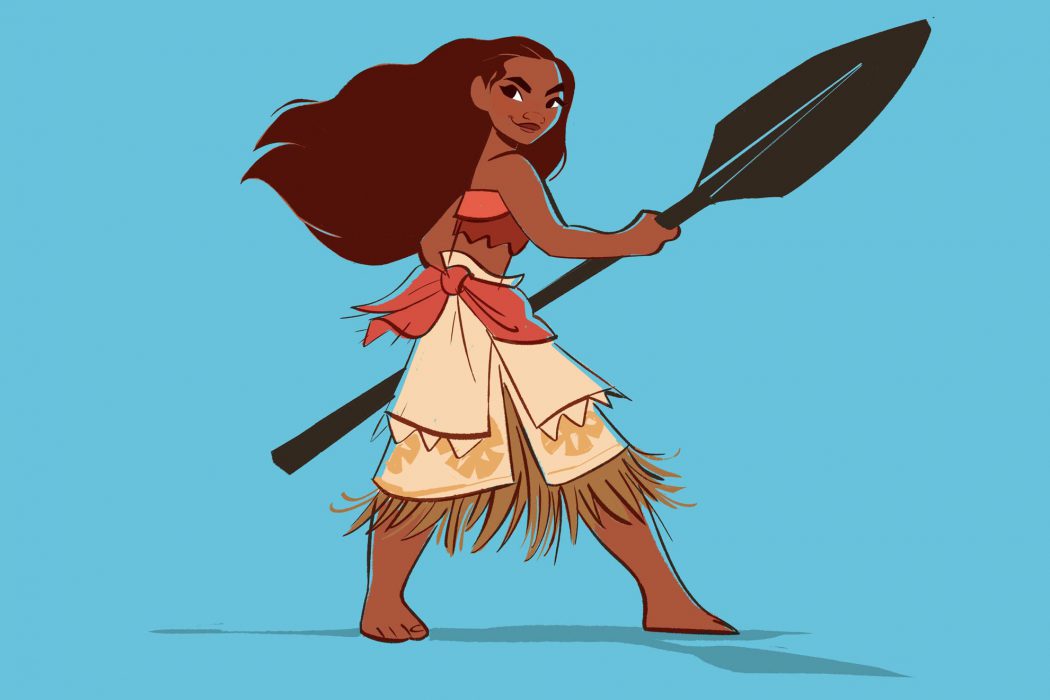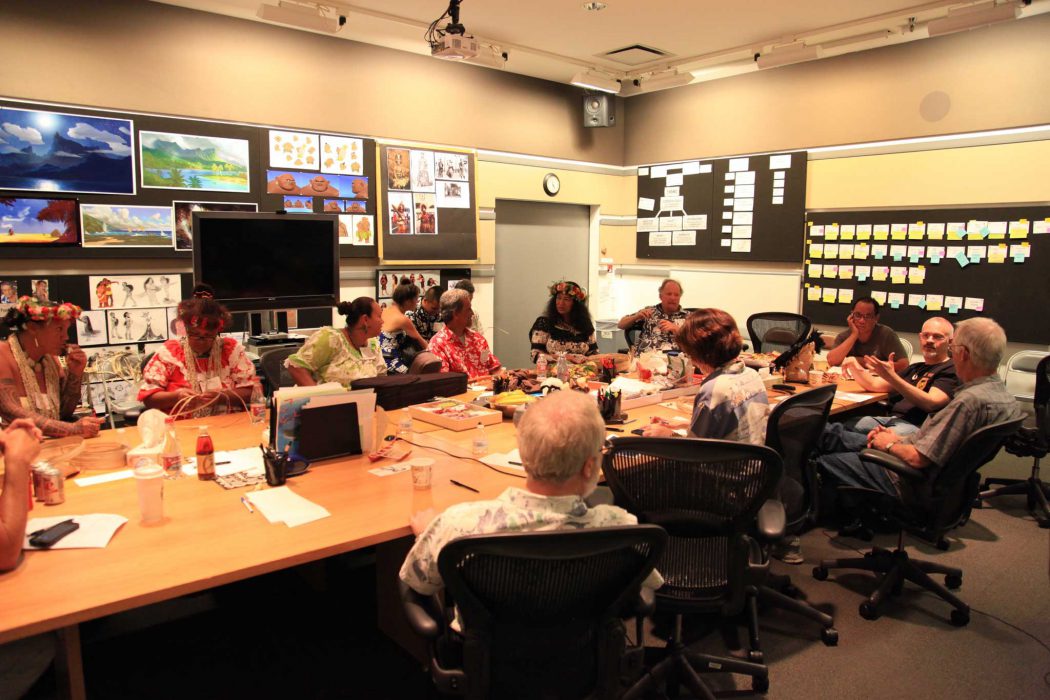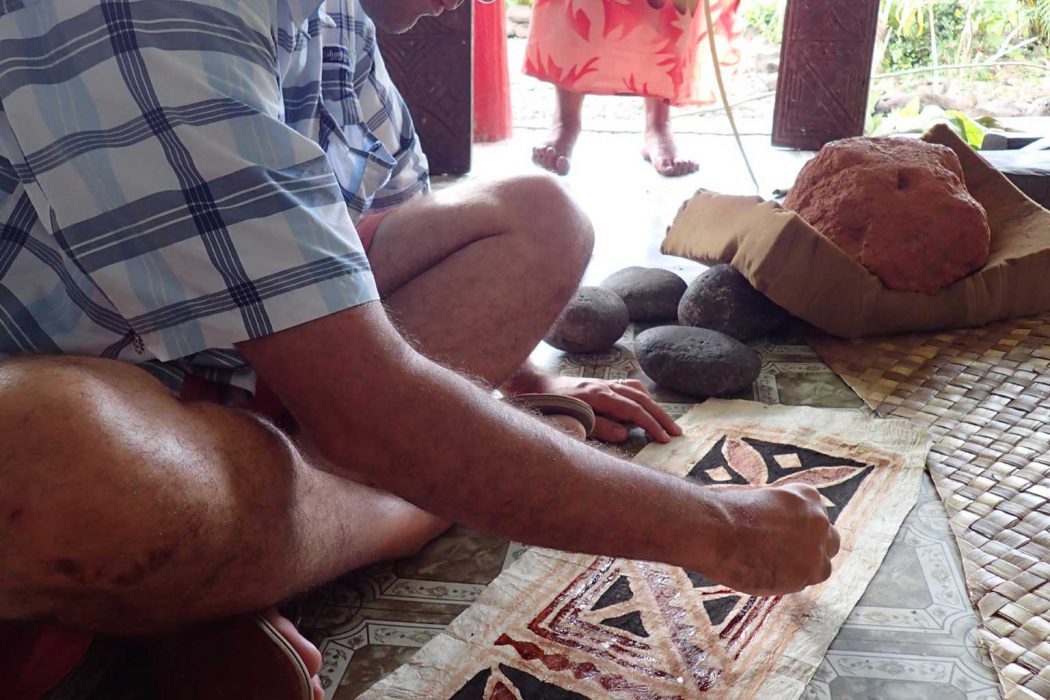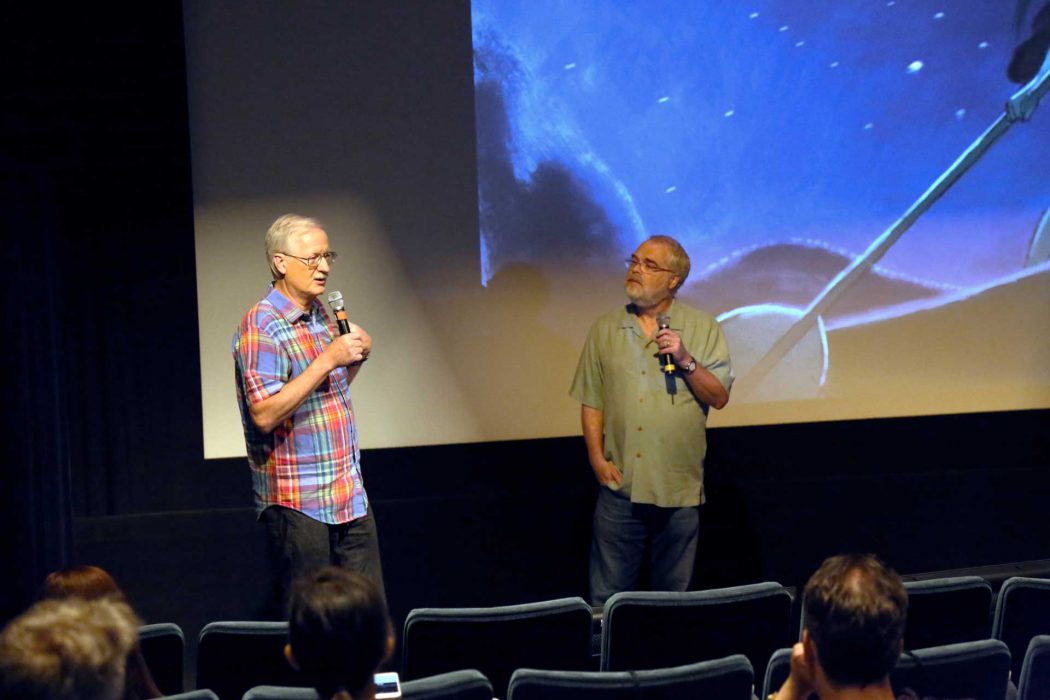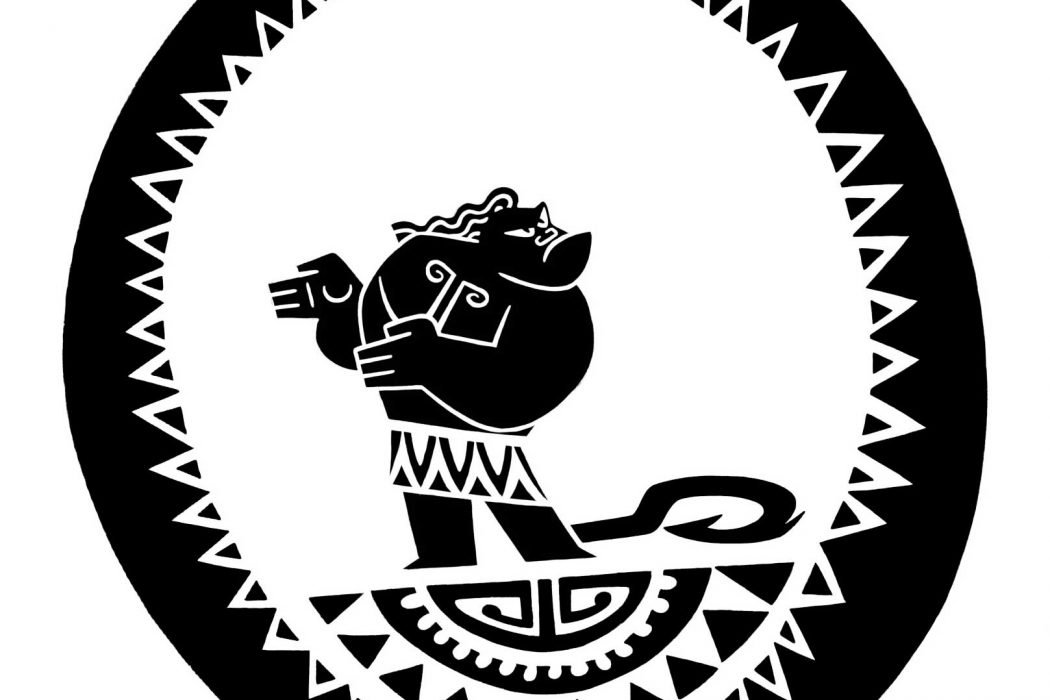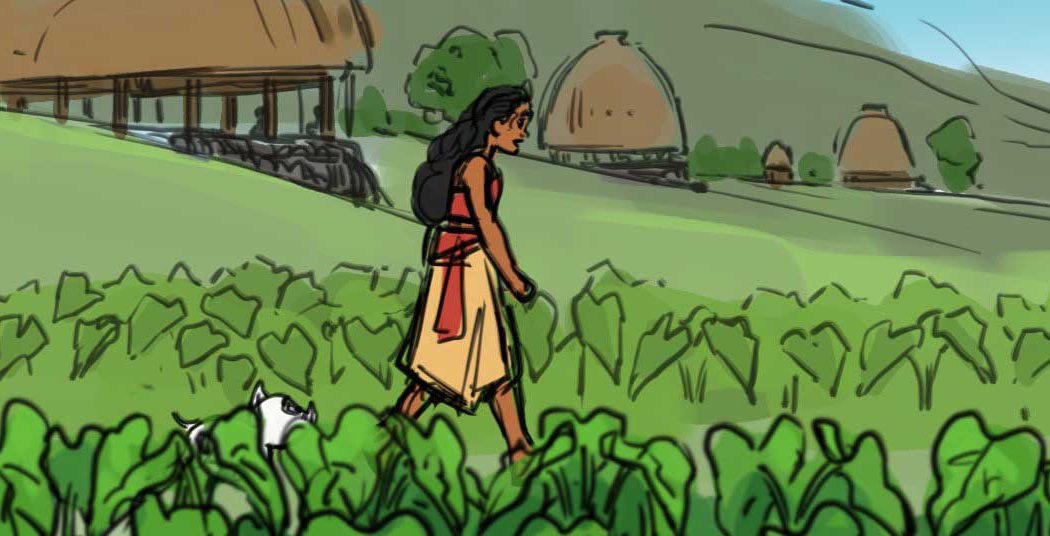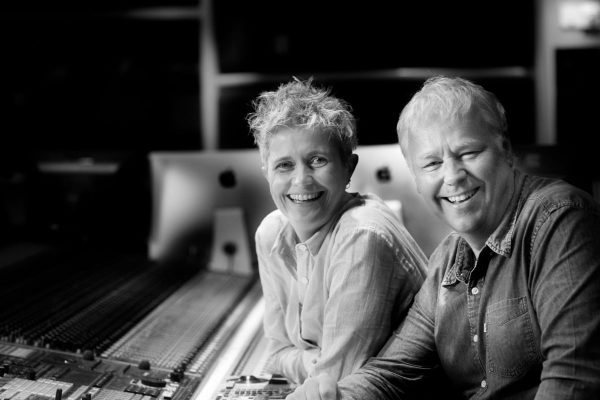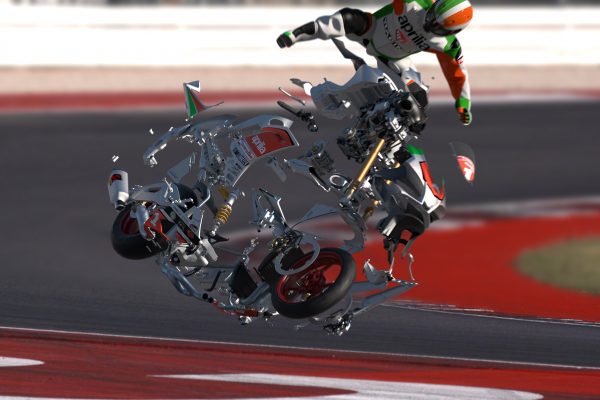How the art and science of CGI animation comes together at Disney.
Article by Drew Turney
Animation is a funny art in the modern studio age. Where the great animators of old sat at drafting boards with pens and paper, today directors must deal with armies not just of designers and art directors but CGI and software engineers, often speaking a very different language than they themselves ever learned.
Even aside from the ever-changing technology that builds it, CG animation is put together kind of backwards. Live action means you start with raw footage that’s then treated and manipulated long after your actors have gone home. The raw footage in animation is what you’re trying to get to from literally nothing, the whole film becoming a post-production exercise just to get to the working shot or scene.
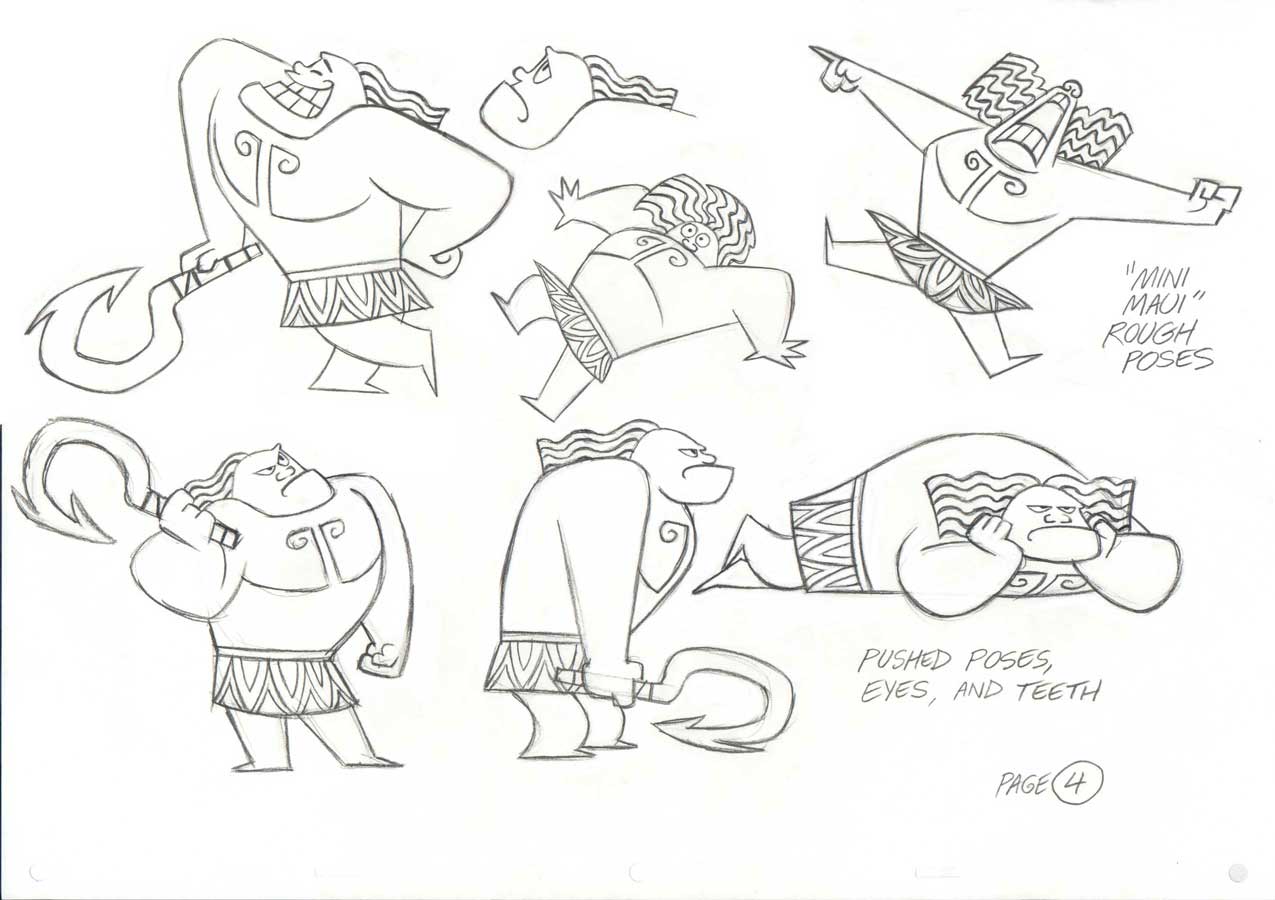
Disney’s Moana employed 90 artists just in the animation department – that didn’t include art people, designers, effects crews or the operators driving the software to put it all together.
And it seems the secret sauce is all in the way the elements click. Character art director Bill Schwab and lead animator Amy Smeed worked closely together even though their jobs were very different. “There are two major parts to my role,” Schwab says, “one is coming on very early and working with the directors and production designer to design the characters with the design team.
“The second is to work closely with the modeling and rigging teams to develop it and the animators to stay with the character, to help transition drawings into something real.”
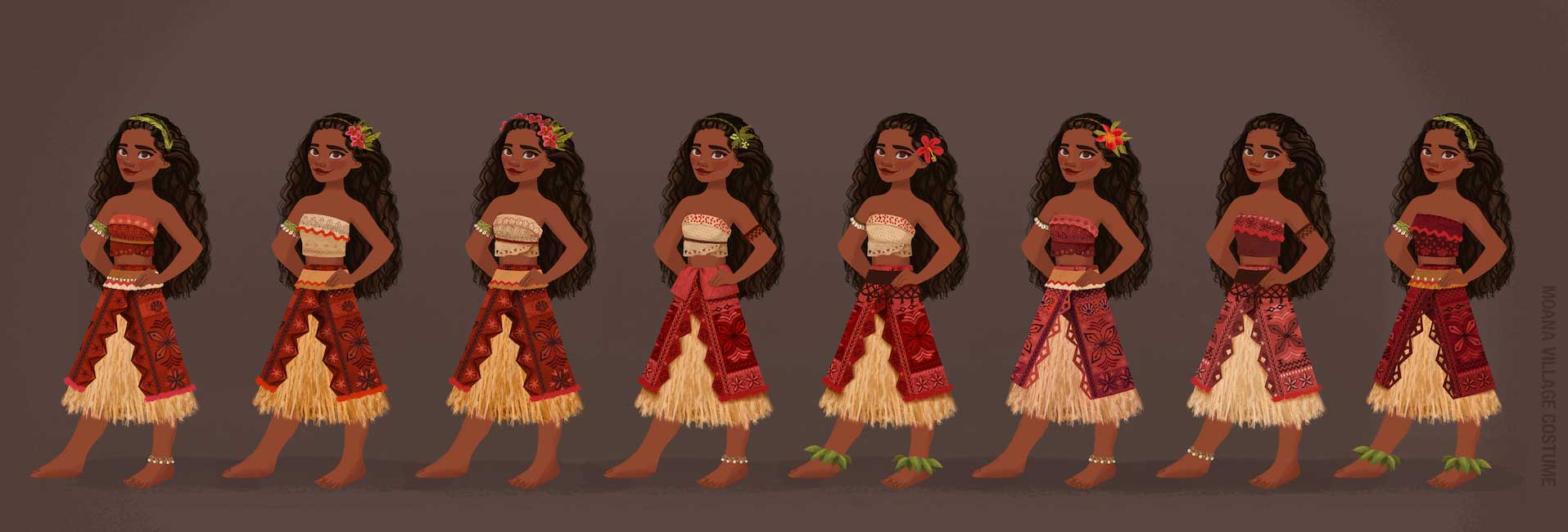
As the story’s evolving in the writing department, Schwab and his colleagues are busy trying to pin down the way a character will look, move, dress or talk and of course, drawings are only proofs on concept – when the character rig is animated and actually does talk, dress or move it will inevitably show up flaws that were never envisioned. “Once you have a drawing everyone loves, you’re only a small part of the way there,” he adds.
The next step, where Smeed steps in is where she, Schwab, the character supervisor and modeler work together to bring the character to living, breathing life.
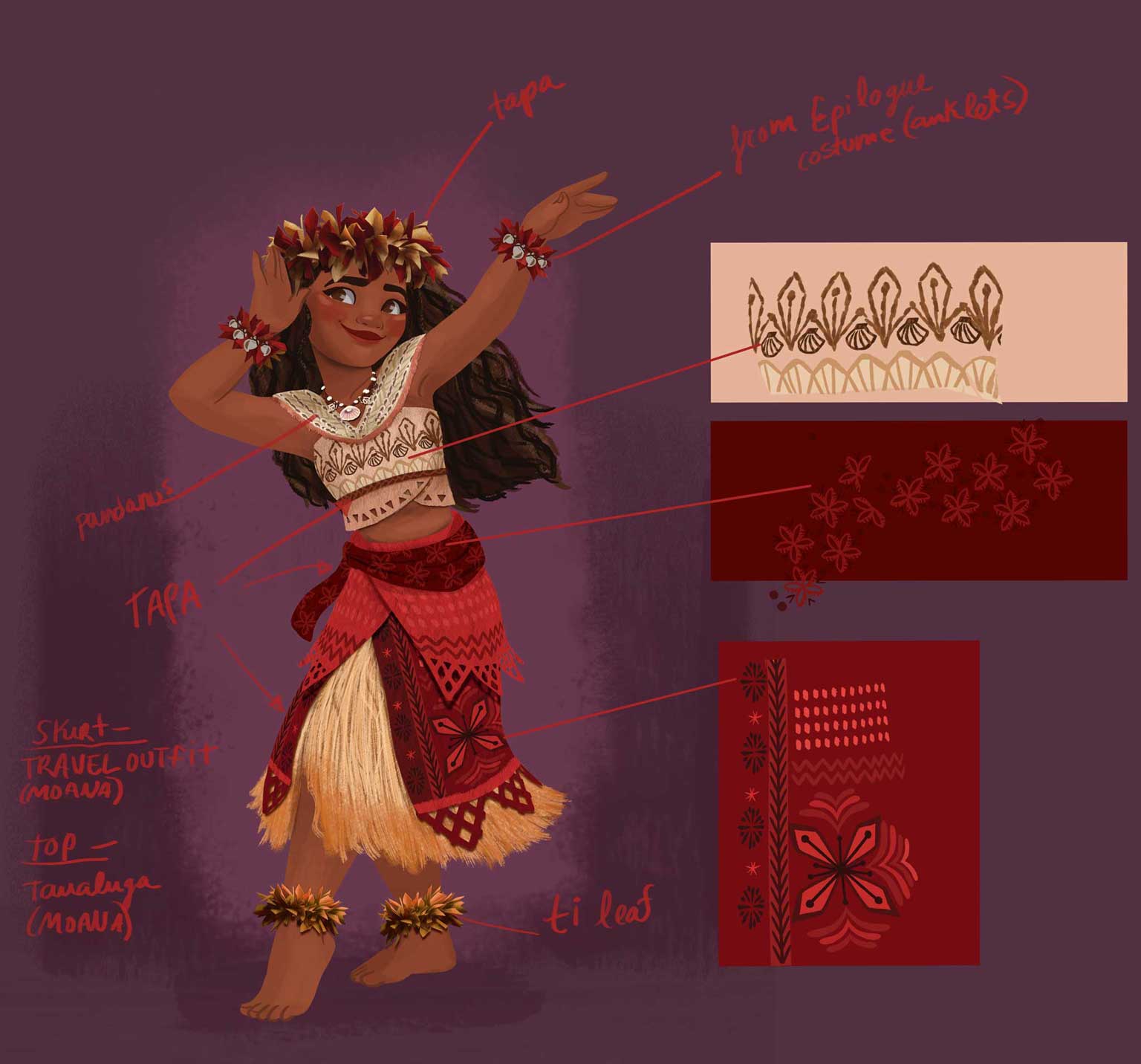
But while Schwab says he has no qualifications to be an animator, nor Smeed a designer, they’re like two sides of the same brain – making it even more important that the collaboration starts way before the virtual cameras start rolling. “Somebody may speak up,” Schwab says, “there are checks and balances along the way.
“I remember saying when I saw some of the early costume designs for Moana that they might be too restrictive for her to climb a tree or do anything athletic,” Smeed agrees. “We needed to make sure the costume would be able to fit what were going to do in animation.”
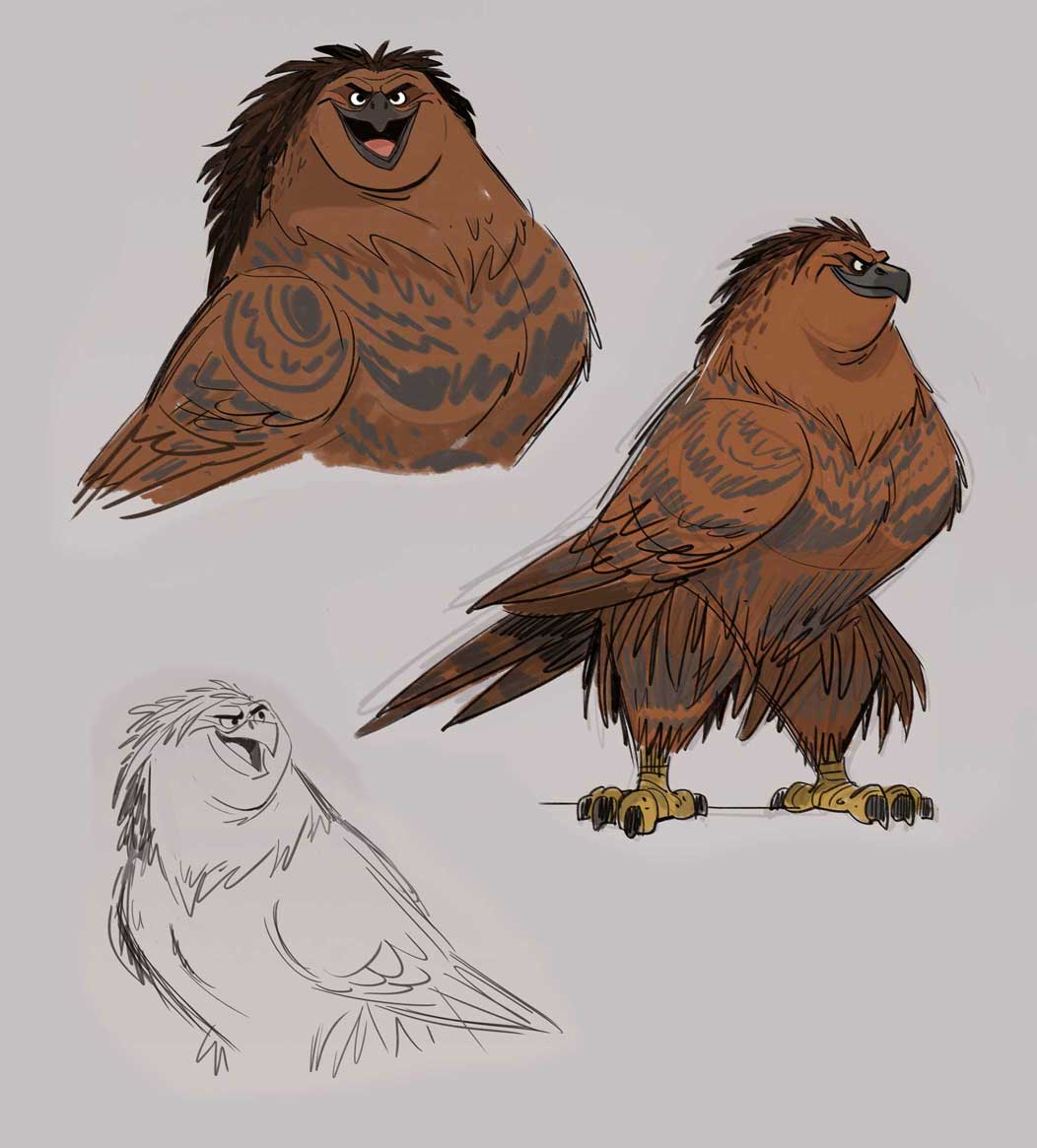
ALL BITS AND PIXELS
Of course, anyone even a little bit connected to Hollywood can tell you what changes CGI and production effects have wrought on the century old art of movie animation. It’s almost charming to hear that an art director like Schwab sits down with paper and pencils and sketches ideas for a character, but at some point it all has to be handed off to a guy behind an expensive workstation running Maya or Final Cut Pro. How much has the essential job description of making an animated movie changed?
“I try not to think too much about the technology,” Smeed says. “Even though what’s on screen is a digital CG model, the principals of animation are still the same, we’re just using a different tool that. Maybe someday there won’t be a character rig, maybe it’ll be something else we use to craft a particular pose, but it’s still crafting those poses and getting the acting to come through.”
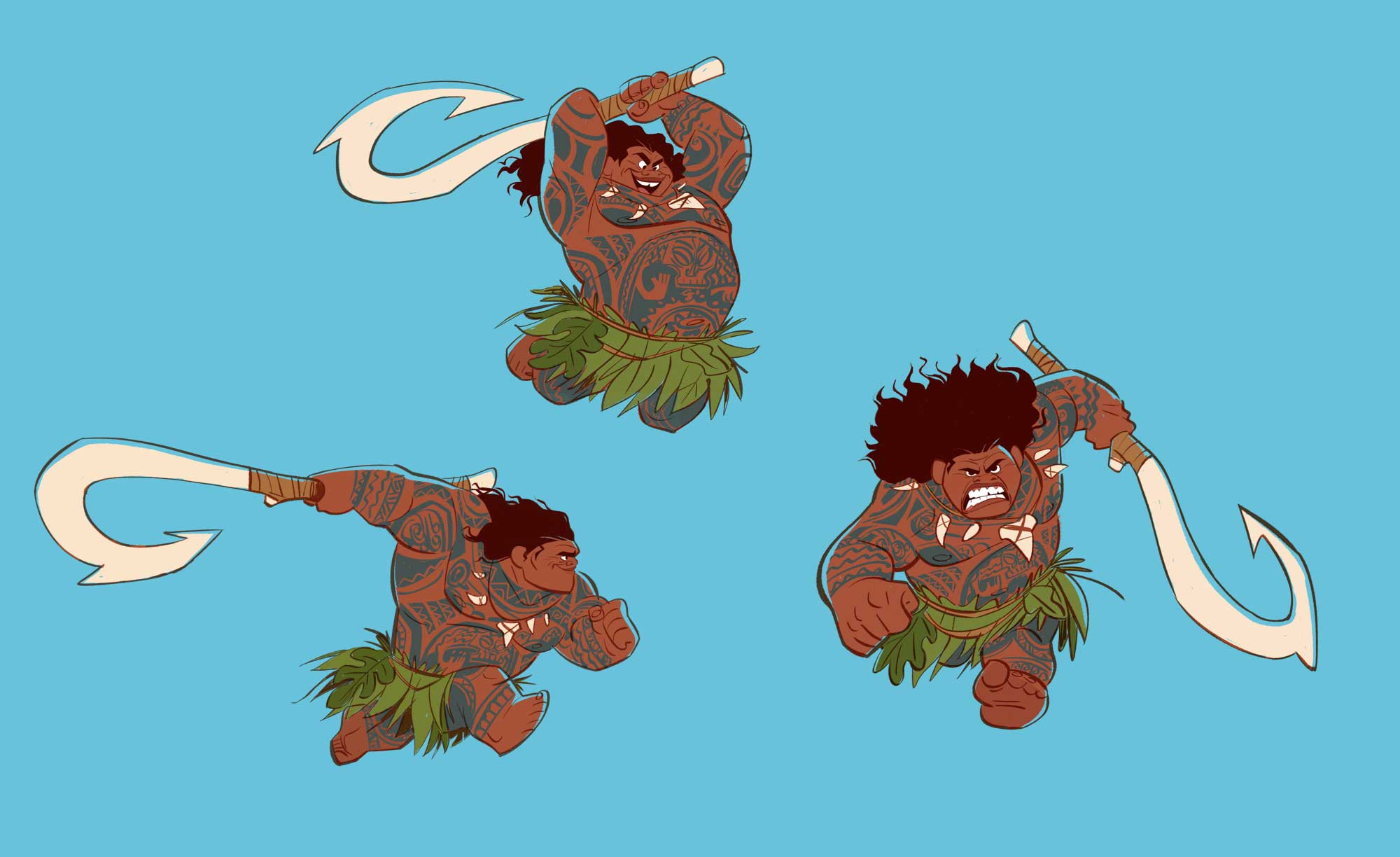
Of course, there are aspects of the tech that bear thinking about simply because of the opportunity they present that never existed before. “One thing we did have to think of early on was [Moana’s] hair. We really didn’t have the technology to do simple things like hair and there are times when we can’t totally ignore that, where we realise we need a tool to be able to do something.”
There are also specific skill-sets involved in calling the shots on any movie, let alone an animated one. In Moana’s case, veteran Disney co-directing team of John Musker and Ron Clements had cut their teeth on the hand drawn, cel-animated 2D worlds of The Great Mouse Detective, The Little Mermaid and Aladdin in the 80s and 90s.
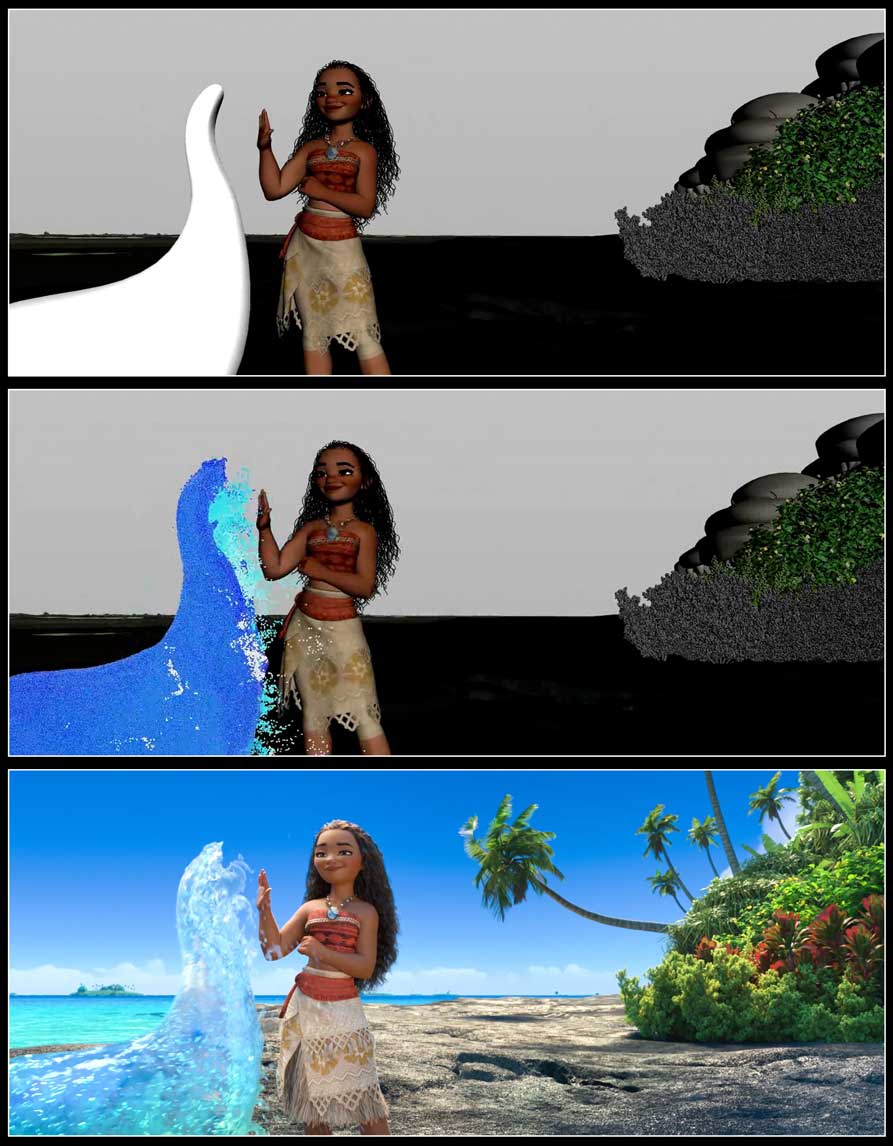
“They need to be able to verbalise what they’re looking for, ” Smeed says when asked how easy traditional animation directing skills are to translate to CG, 3D and all the new bells and whistles.
“Ron and John really wanted to understand the technical stuff so they asked a lot of questions up front about how things worked, but ultimately they just need to look at something on a big screen and say, ‘The acting isn’t feeling quite right here because of this, maybe we can push this a little bit further.’
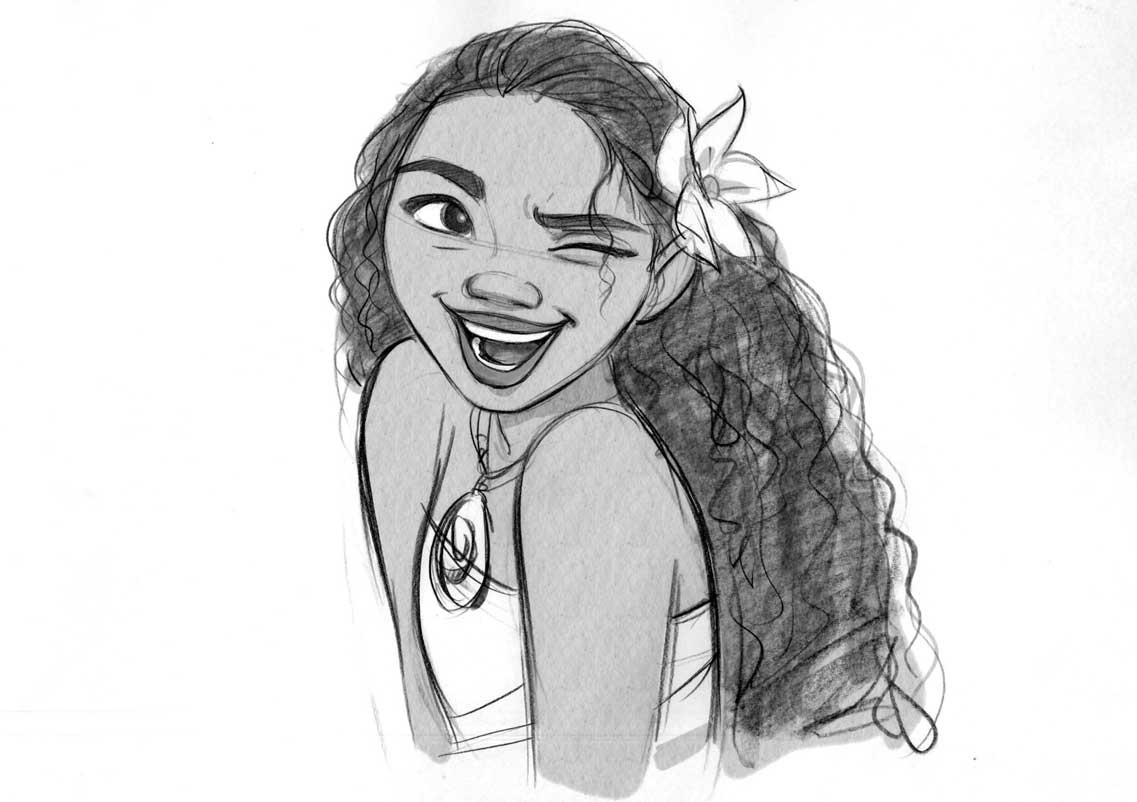
Musker and Clements report that they’re comfortable in animation because of the constants that remain from the old way of working, despite the newfangled ways of the medium. “We’ve been at Disney quite a while and the process has evolved over the years but there are still elements that haven’t changed that much, it was really a process that started with Walt Disney,” says Clements.
“In broad strokes, it’s sort of easier to get going in 2D because you have a blank piece of paper,” Musker adds. “You have to build assets in the CG world, you’ve got to build the sets, you’ve got to build and rig the characters. I once talked to Brad Bird about it, he made the switch when he went from The Iron Giant in 2D to The Incredibles and he’d say ‘man, it takes so long but then whoa, it suddenly looks so great!'”
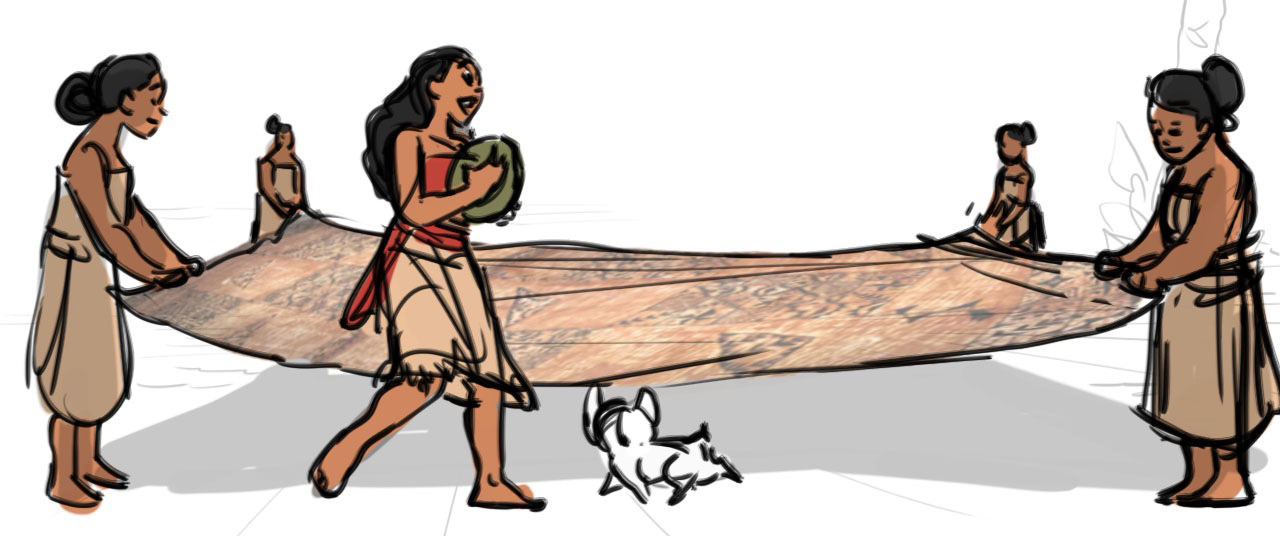
Musker also says the process is more linear in 2D, something they had to get used to. “We look at the dailies and we say ‘that tree’s in the way,’ and they say ‘that tree’s not going to be there’,” he laughs. Clements adds they were in the process of getting T shirts made that sad ‘that’s not the real sky’.
If the performance of Disney animated movie over the last years have been anything to go by, Moana will be riding the crest of a very big wave any day now. The art and technology behind animation always changes, but if Musker, Clements and their teams have done their job, you’ll soon forget you’re even watching computer programs and pixels at work.

The MOANA story team was charged with saving the character “Heihei” from being cut from the film. These story boards illustrate an action sequence from the film in which the Kakamora are trying to steal the Heart of Te Fiti from Moana and Maui. In the initial version (top row), the Kakamora steal the heart and are pursued by Moana who captures it back. In the new versoin (bottom row), rooster Heihei first swallows the Heart of Te Fiti, and the chase ensues between the Kakamora and Moana, only this time they’re fighting to maintain posession of Heihei. Artist: Sunmee Joh, Story Artist.
Images courtesy of Disney Pictures.

